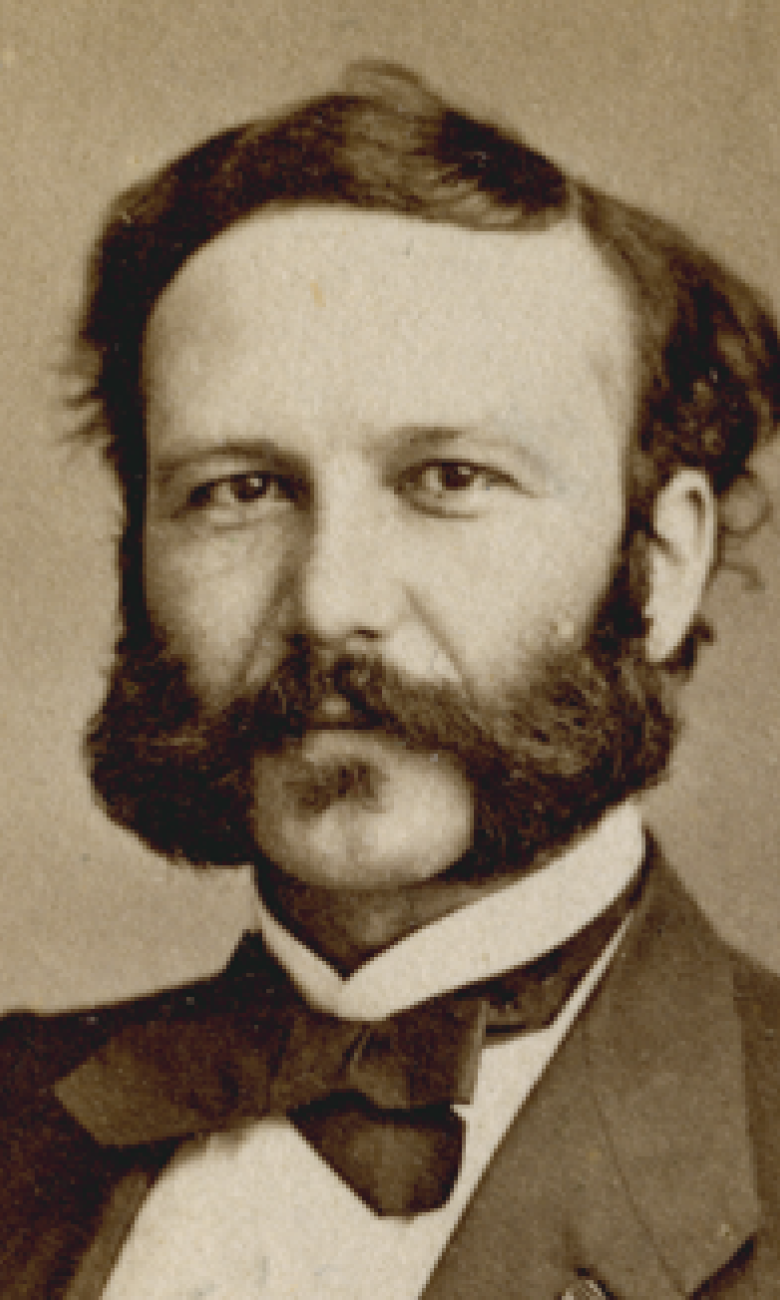70 years of the 1949 Geneva Conventions – a success story of multilateralism
The Geneva Conventions, which are universally ratified, represent a unique commitment to a common humanity and constitute the core of international humanitarian law. Over the past seven decades they have saved millions of lives in hundreds of conflicts around the world.
70 years later, they remain as relevant as ever to protect victims from the harmful effects of contemporary armed conflicts.
Everything started in 1859 with a Swiss entrepreneur
Whilst the Swiss entrepreneur Henry Dunant was travelling to northern Italy on a business venture, he became a witness to the horrors of the Battle of Solferino, which resulted in more than 6000 dead and 40 000 wounded. Returning to Geneva, Henry Dunant wrote A Memory of Solferino (1862), in which he put forward two revolutionary ideas: first, aid societies should be established in each country to take care of those injured in war; second, an international agreement should be concluded to protect the wounded and medical personnel. His first suggestion ultimately led to the foundation of the International Committee of the Red Cross (ICRC) in 1863.


One year later, a diplomatic conference was convened by Switzerland with the support of the ICRC. It led to the adoption of the First Geneva Convention for the protection of the wounded in the field.
Further strengthening of the Conventions
In the following years, Switzerland and the ICRC convened several diplomatic conferences in Geneva that led to several international conventions in order to gradually enhance the protection of victims of armed conflicts such as the extension of the first Geneva Convention to maritime warfare (1899) and the adoption of a new convention on the treatment of prisoners of war (1929). However, the horrors of the Second World War demonstrated the need to further strengthen these existing provisions and create new rules to protect the civilian population. In response, Switzerland called upon States to come together once more in Geneva and join forces for the good of humanity. Under the guidance of Swiss Federal Councillor Max Petitpierre, and building on the work already undertaken by the ICRC in the 1930s, States only took four months to agree to revise the existing conventions and add a fourth one covering the civilian population. The four Geneva Conventions that emerged were adopted in 1949 and remain in force to this day.

© ICRC archives (ARR)
It is not the ICRC which convenes diplomatic conferences; it is more orthodox if this is done by a public authority. From the beginning it has been the Swiss Government, true to its tradition and to the support it has always given to the Red Cross, a fine embodiment of its ideal of neutrality and peace.
— Jean S. Pictet, Vice-President of the ICRC 1971-1979
The standards of humanity
The four Geneva Conventions represent the core of international humanitarian law (IHL) - a set of rules that establish minimum standards of humanity that must be respected in any situation of armed conflict. They restrict means and methods of warfare and seek to protect people who do not or no longer take part in the hostilities such as wounded, sick and shipwrecked members of the armed forces, prisoners of war.

These rules reflect the balance that must be struck between the principles of military necessity and humanity, which prohibit the infliction of suffering, injury or destruction not actually necessary for the accomplishment of legitimate military purposes. The Geneva Conventions must be applied and respected by all parties in an armed conflict, irrespective of their motivations to go to war. This includes non-international armed conflicts, i.e. hostilities between a State and an armed group, or between such armed groups, which are covered by Article 3 common to the four Geneva Conventions.

The adoption of this article in 1949 was - a breakthrough, since previous IHL treaties had only covered situations of wars between States. On the basis of the Geneva Conventions, millions of lives have been saved over the past seven decades. In addition, by alleviating the consequences of war, the Geneva Conventions facilitate the return to durable peace, stability and prosperity.

© ICRC archives (ARR)
Let us remember that the spirit of the Conventions – to uphold human dignity even in the midst of war – is as important now as it was then. Let us always remember that the Conventions are law - but somehow transcend law - as what they require is not only legal but just and right. Let all of us do what we can to ensure that this spirit prevails.
- Peter Maurer, President of the ICRC, at a public lecture on 13 March 2019
A unique and global commitment
Today, the 1949 Geneva Conventions have been ratified by all States and thus are among the most universally accepted instruments of international law – a real success story of multilateralism! However, there are still violations that occur, underlining the crucial role that these Geneva Conventions continue to play today.
The 70th anniversary of the Geneva Conventions represents an opportunity for all States to take concrete steps to renew their commitment to a common humanity and ensure respect for IHL. For Switzerland, the implementation, promotion and reinforcement of international humanitarian law are among its foreign policy priorities. And Geneva, the Swiss city which shares its name with the Conventions has become the global hub of humanitarian efforts.
The Geneva Conventions represent a universal commitment to a common humanity. They form the core of international humanitarian law, which protects the most vulnerable in armed conflicts, and have saved millions of lives over the past decades. Constant efforts are needed to ensure that international humanitarian law is respected and guarantees this protection.
– Ignazio Cassis, Federal Councillor and Head of the Swiss Federal Department of Foreign Affairs.

© ICRC archives (ARR)




